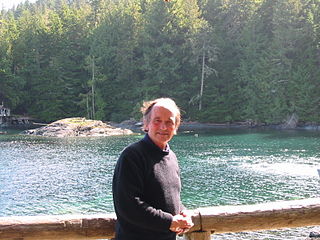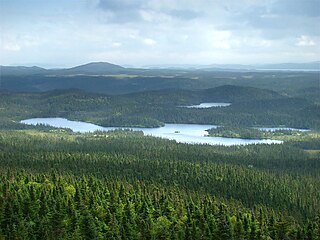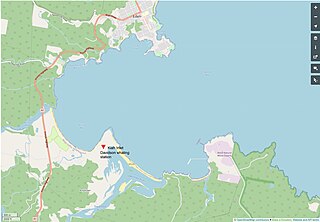
The orca, or killer whale, is a toothed whale that is the largest member of the oceanic dolphin family. It is the only extant species in the genus Orcinus. Orcas are recognizable by their black-and-white patterned body. A cosmopolitan species, orcas are found in diverse marine environments, from Arctic to Antarctic regions to tropical seas.

Canadian literature is the literature of a multicultural country, written in languages including Canadian English, Canadian French, and Indigenous languages. Influences on Canadian writers are broad both geographically and historically, representing Canada's diversity in culture and region.

Paul Spong is a Canadian neuroscientist and cetologist from originally from New Zealand. He has been researching orcas in British Columbia since 1967, and is credited with increasing public awareness of whaling, through his involvement with Greenpeace.

Corky II, often referred to as just Corky, is a female captive orca from the A5 Pod of northern resident orcas. At approximately the age of four, Corky was captured from Pender Harbour off the coast of British Columbia on December 11, 1969. She has lived at SeaWorld San Diego in San Diego, California since 1987. As of 2023, she is the oldest and longest kept captive orca. SeaWorld San Diego celebrates her birthday on 2nd January every year.

Terra Nova National Park is located on the east coast of Newfoundland in the Canadian province of Newfoundland and Labrador, along several inlets of Bonavista Bay. The park takes its name from the Latin name for Newfoundland; it is also the original Portuguese name given to the region.

Orca is a 1977 American thriller film directed by Michael Anderson and produced by Dino De Laurentiis, starring Richard Harris, Charlotte Rampling and Will Sampson. The film follows a male orca tracking down and getting revenge on a boat captain for killing the whale's pregnant mate and their unborn calf.

Old Tom was a killer whale (orca) known to whalers in the port of Eden, New South Wales, on the southeast coast of Australia. Old Tom measured 22 feet (6.7 m) and weighed 6 tons, with a 3.33 ft (1.01 m) skull and teeth about 5.31 inches (135 mm) long.
Allen Sapp was a Canadian Cree painter, who resided in North Battleford, Saskatchewan. His art and his story have become known throughout Canada. His paintings tell a personal story, and many feature images of his grandmother. His work and life story have been the subject of a number of books and television documentaries.
(Barbara) Anne Cameron was a Canadian novelist, poet, screenwriter, short story and children's book writer.

L98 Luna also known as Tsux'iit, was a killer whale (orca) born in Puget Sound. After being separated from his mother while still young, Luna spent five years in Nootka Sound, an ocean inlet of western Vancouver Island, where he had extensive human contact and became recognized internationally.
Beth Goobie is a Canadian poet and fiction writer.

Sheryl McFarlane is a Canadian author of books for children and young adults.
The Song within my Heart by Dave Bouchard is a children's picture book by David Bouchard with illustrations by Allen Sapp. It was first published in 2002 by Raincoast Books. A story about a young Cree boy, it is based on the memories of the illustrator as told to the author. Allen Sapp received a Governor General's Award for the illustrations in 2003.
Daniel Francis is a Canadian historian and writer. He has published thirty books, chiefly about Canadian, British Columbian and Vancouver history, on a broad range of subjects, from the Canadian fur trade and prohibition to the history of whaling, transportation and Indigenous peoples.
David Bouchard is a Canadian author and former high school principal.

Cherie Dimaline is a Métis writer from the Georgian Bay Métis Nation, a federally recognized community in Ontario. She has written a variety of award-winning novels and other acclaimed stories and articles. She is most noted for her 2017 young adult novel The Marrow Thieves, which explores the continued colonial exploitation of Indigenous people.
Bisexual literature is a subgenre of LGBT literature that includes literary works and authors that address the topic of bisexuality or biromanticism. This includes characters, plot lines, and/or themes portraying bisexual behavior in both men and women.
Melanie Florence is a Canadian author of Cree and Scottish heritage.
Lance Barrett-Lennard is a Canadian biologist specializing in the behavioural ecology and population biology of Killer whales. A molecular geneticist, Barrett-Lennard uses DNA analysis to study the dispersal, mating habits, and group structure of killer whale sub-populations in the Pacific Northwest. He is best known for his research concerning the conservation of the Southern Resident killer whale sub-population. As of 2022, he is a Senior Scientist in the Cetacean Conservation Research Program at the Raincoast Conservation Foundation.









